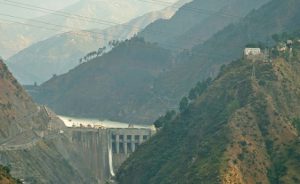Richard Betts is a climate scientist at the Met Office Hadley Centre and the University of Exeter. He leads a research team examining the impacts of climate change and was a lead author for the fourth and fifth assessment reports of the Intergovernmental Panel on Climate Change. He shared with chinadialogue five key publications to understanding the science of climate change.
J S Sawyer (Nature, 1972)
This paper builds on an earlier seminal paper by Manabe and Wetherald that used an early climate model to estimate the global warming that would arise from a doubling of CO2. Sawyer used this to estimate warming expected by the year 2000, an estimate that can now be compared with reality. Sawyer’s estimate was 0.6 degrees Celsius.
In fact, actual warming between the early 1970s and 2000 was about 0.5 degrees Celsius, so it was a slight overestimate but not too bad in my view. Essentially, the warming that we’ve seen in my lifetime was predicted fairly accurately in advance.
Simon F. B. Tett, et al (Nature, 1999)
This was another seminal paper in being a fairly comprehensive study of the causes of recent climate change. Its methods are still in use now – so although the science has moved on in terms of better models, the fundamental principles of detection and attribution are still well illustrated by this paper.
Colin P. Morice, et al (Journal of Geophysical Research, 2012)
This paper accompanies the latest release of the HadCRUT dataset, which shows that global average temperature has been warming in the long-term, with year-by-year ups and downs. The last decade has shown a slower rate of warming, although this still looks within the range expected from natural variability as opposed to necessarily indicating a change in the long-term trend.
When the paper was released, there was some attention given to changes in the "ranking" of individual years – i.e. which was the "warmest ever" – but it is not really worth paying too much attention to whether one particular year was apparently marginally warmer or cooler than another. Nevertheless, we can be confident that the 2000s were on average warmer than the 1990s, which were warmer than then 1980s, which were warmer than the 1970s.
Garth Paltridge
Paltridge is an Australian atmospheric physicist. Some might call him a climate sceptic, others might call him a "lukewarmer". Being an atmospheric physicist, he does of course agree that increasing carbon dioxide concentrations in the atmosphere can be expected to cause a warming of the global climate. His main point is that he does not expect the future rate or magnitude of such warming to be significant enough to warrant the sacrifice (as he sees it) of reducing carbon emissions to the extent being proposed.
Opinions on the appropriate response to climate change do inevitably come down to a judgement call on how to respond to large uncertainty and weigh up risks of action versus inaction. Paltridge has his views on the costs of action and wants high confidence of there being a very significant danger before taking such action. Some readers will agree, others will disagree. In my opinion, it is a judgement call that cannot be informed by science alone.
For me, the important contribution of this book is that it reminds us that while climate models are the best tools we have for understanding the implications of changes imposed on a complex system, they are a long way from being a crystal ball. This point is particularly important in the context of climate change adaptation. There are increasing calls for information on how the climate may change at local scales in order to inform adaptation – that is, living with a changing climate. The models can give a range of possible outcomes but not a perfect prediction, so decisions need to be resilient to this.
IPCC, 2012
There is a huge amount said about climate change and extreme events, and whether this is causing an increase in disasters. Sometimes there does seem to be a tendency to over-state the case for the role of climate change in trends in disaster losses. The report does a thorough job at looking for the real hard evidence of such changes, and in my opinion presents a very balanced view that is clear about which changes we are confident that we are seeing, which we are less confident in, and which there is not real, hard evidence for.
It also looks at future projections, and in my view it does recognise the uncertainties and limitations of climate model projections that Paltridge notes. I don’t think it is “alarmist”; it gives a measured view of the science that can be used as part of the information to inform judgement calls on responses to climate change – particularly those involving decisions on adaptation and increasing resilience to extreme weather events.




